Cherry Blossoms 2015: Hakodate Report (4/29)
| Official cherry blossom reports by japan-guide.com - 2015 Cherry Blossom Forecast - Schedule of upcoming reports |
| previous post |
| next post |
2015/04/29 - Hakodate Report
by raina
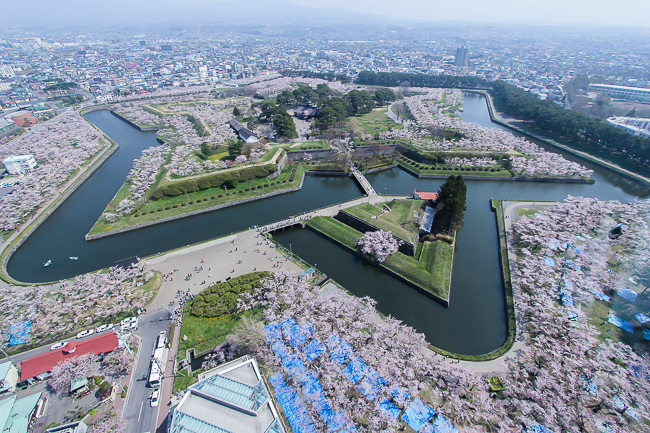
This week, we bring you cherry blossom reports from Hokkaido. Today, I am in Hakodate, Hokkaido's third largest city in the southern tip of the island, and visited the city's top cherry blossom spots. Hakodate is a 1.5-hour flight or a six hour train ride (shinkansen and limited express train) from Tokyo.
The cherry blossoms in Hakodate were the first to open in all of Hokkaido this season on April 21 and reached full bloom (mankai) three days later on April 24, ten days earlier than the average year. While the cherry blossoms usually take an average of one week from opening (kaika) to mankai, they tend to develop much quicker in the northern cities later in the season.
Hakodate Park
April 29, 2015 - petals starting to fall
I started my day bright and early at Hakodate Park, one of the city's top cherry blossom spots. The park was mostly quiet except for the early morning walkers doing laps near the main entrance. I joined them for a lap to warm up on this slightly chilly morning and headed off to explore the park.
There are about 700 cherry trees planted in the park and while the blossoms still looked full and fluffy, the petals have started to fall and would drop in the hundreds in slightly strong winds. It should still be peak viewing over the next couple of days as the weather is forecast to be sunny, before even more petals drop off and the trees start looking more leafy than blossom-y.
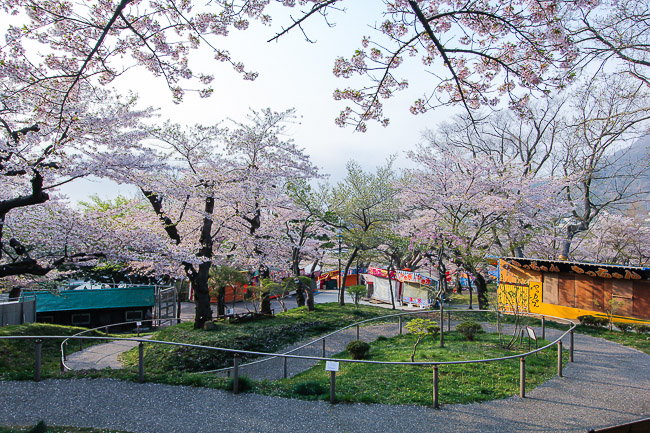
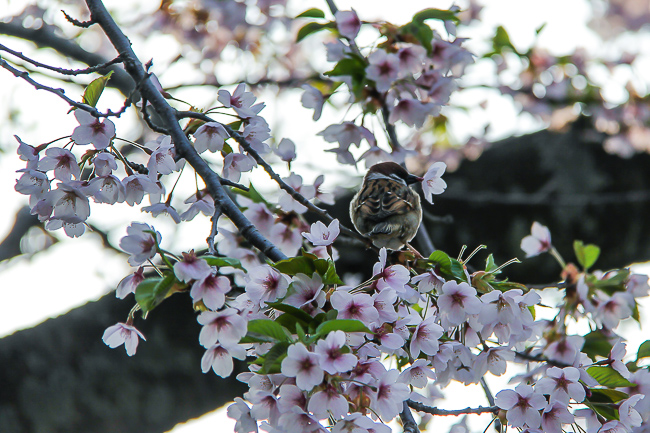
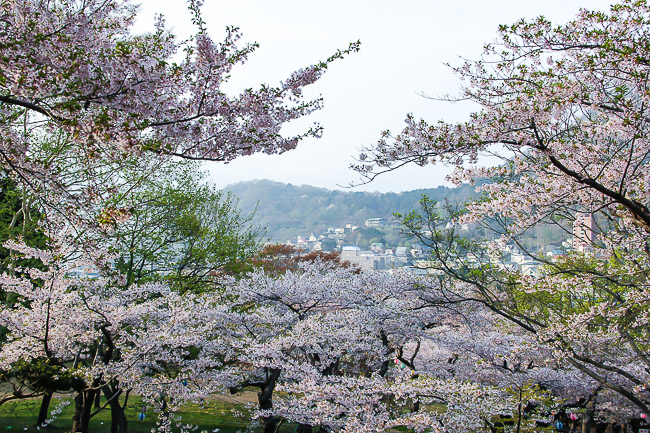
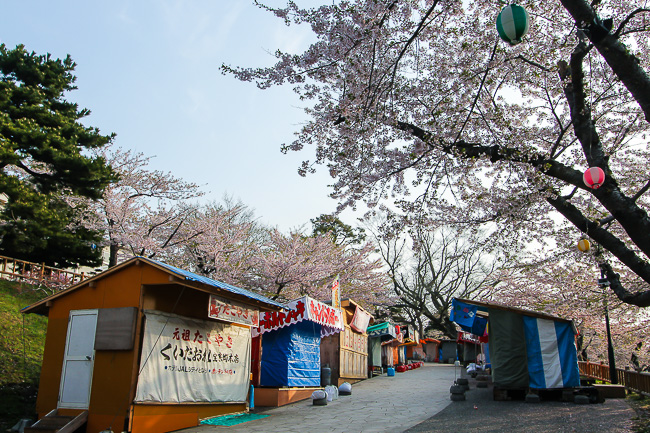
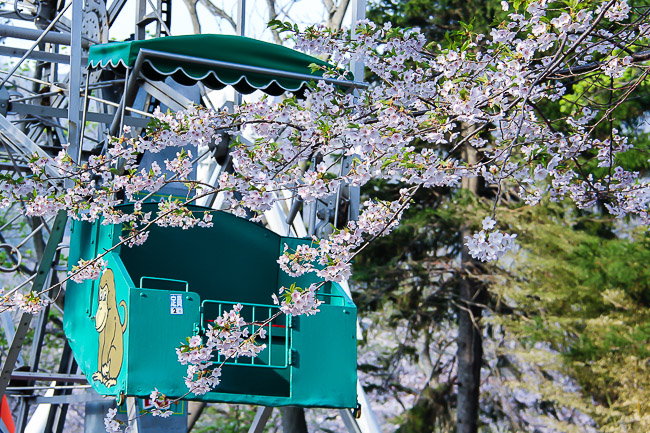
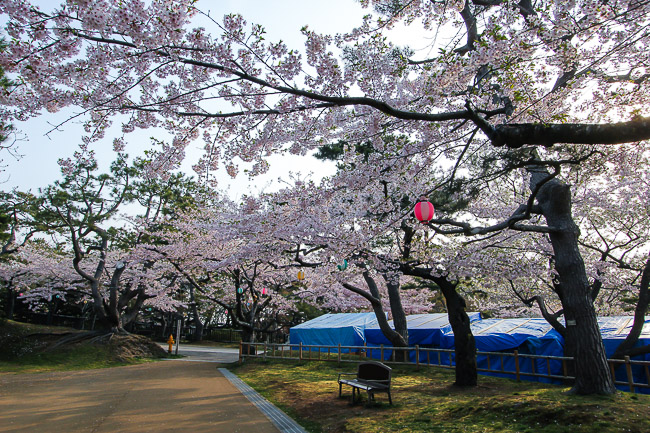
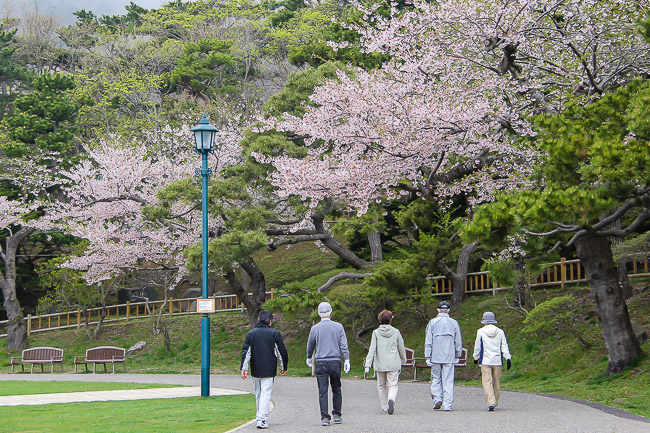
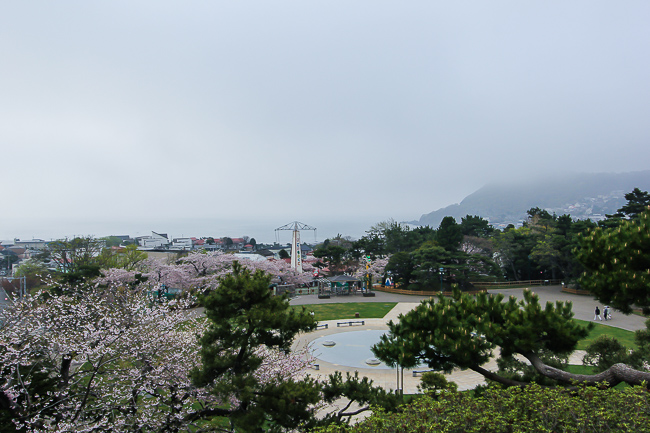
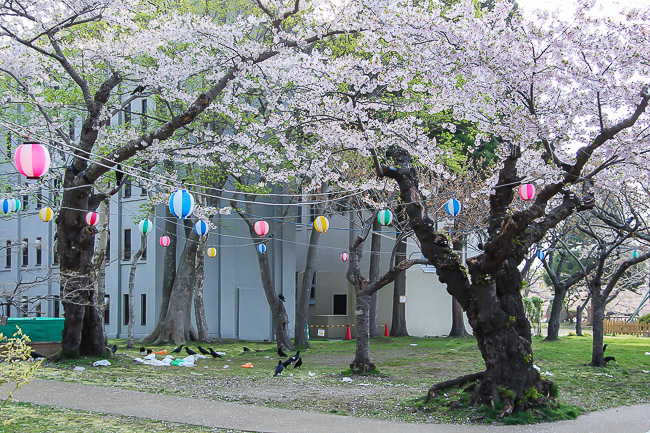
Dropped by the Hakodate Morning Market for breakfast to sample some of the fresh seafood that Hakodate is famous for before heading to my next destination, Fort Goryokaku.

Fort Goryokaku
April 29, 2015 - full bloom
From Hakodate Station, it takes about twenty minutes (about ten minutes by tram, followed by a ten-minute walk) to get to Fort Goryokaku. Goryokaku is a massive star-shaped, western style fortress built towards the end of the Edo Period. There are about 1600 cherry trees planted along its moats making it one of Hokkaido's best cherry blossom spots. The observation deck of the nearby 107-meter tall Goryokaku Tower offers a bird's eye view of the star-shaped fort and cherry trees. Access to the observatory costs 840 yen.
The cherry trees inside the fort were at full bloom and should remain at their peak for the next few days, while the cherry trees outside the moat had petals falling but still looked full. For those in the area, I would recommend you to go before the weekend is over to catch the best of both worlds, full bloom on the inside and petals falling on the outside.
I headed up to the observation deck first to check out the views and wasn't disappointed at all. It was impressive to see the fort and the numerous cherry trees in full bloom from above. After taking about a million pictures of the view, I headed into the fort itself. The fort is free to enter and visitors can also walk along the moat alongside the cherry trees or along the raised banks above the trees. The view from inside the fort was as gorgeous as it was from the top as I walked along the moat. I saw many people enjoying the beautiful spring weather strolling around. Open fires are not allowed inside the fort, but is allowed outside the moat, and that's where I saw lots of people picnicking and barbecuing under cherry trees.
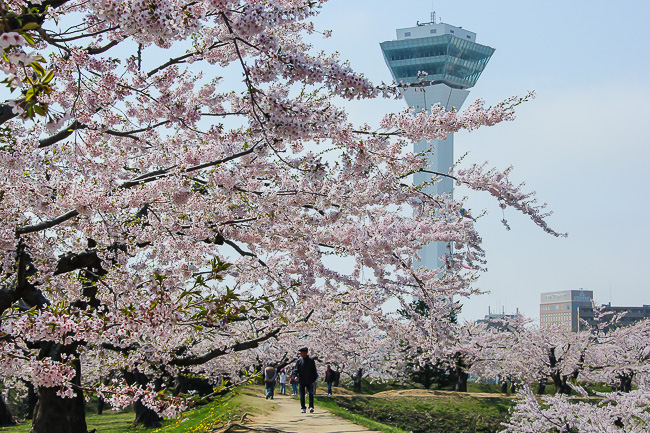
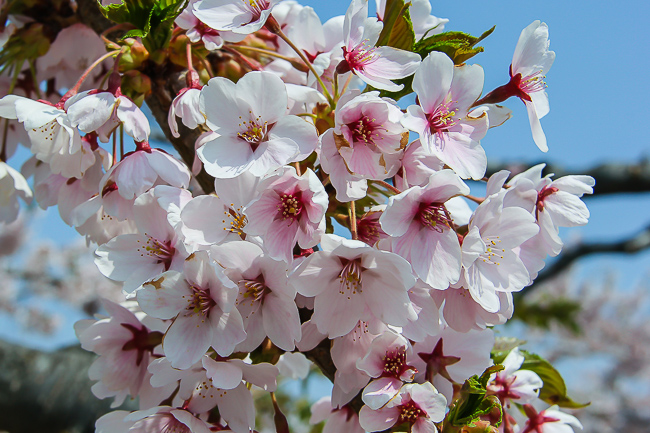
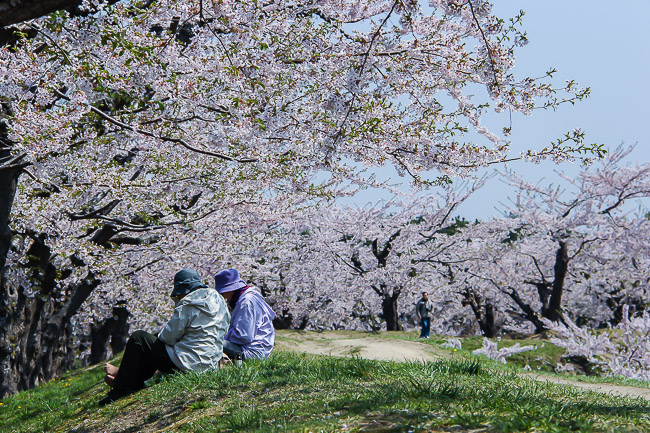
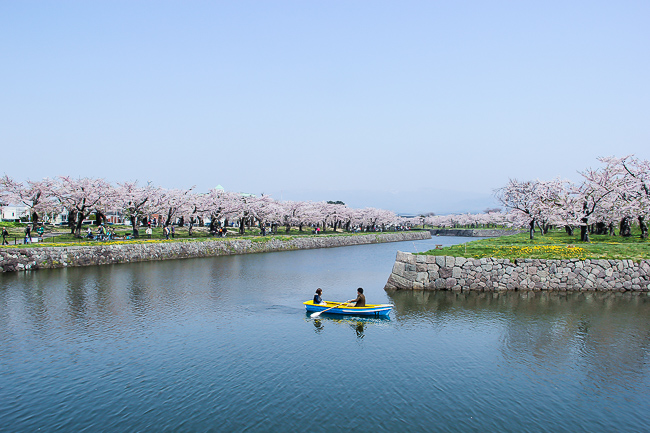
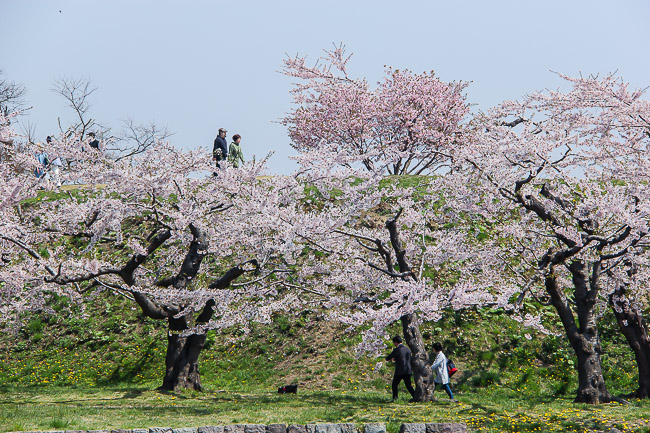
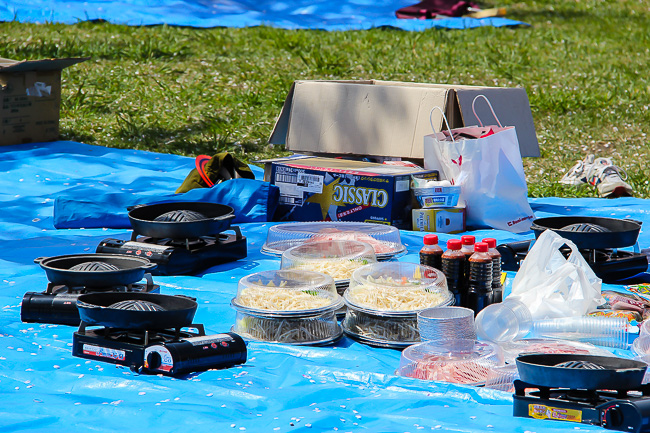
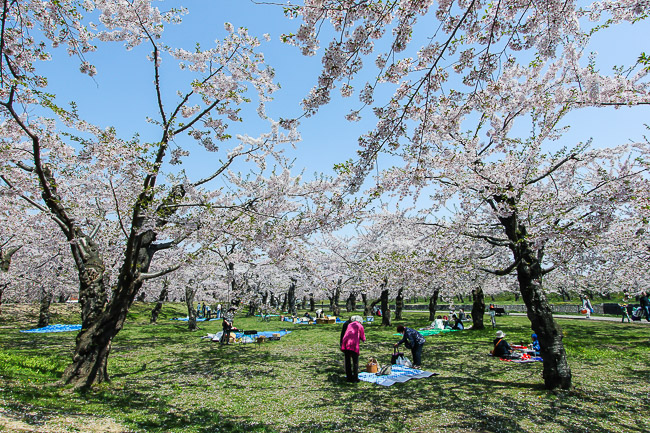
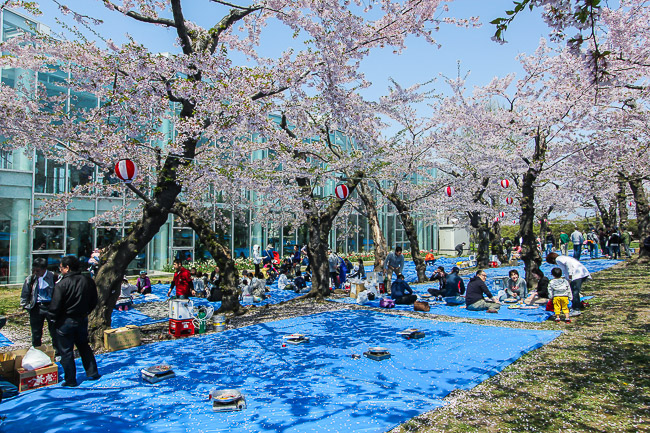
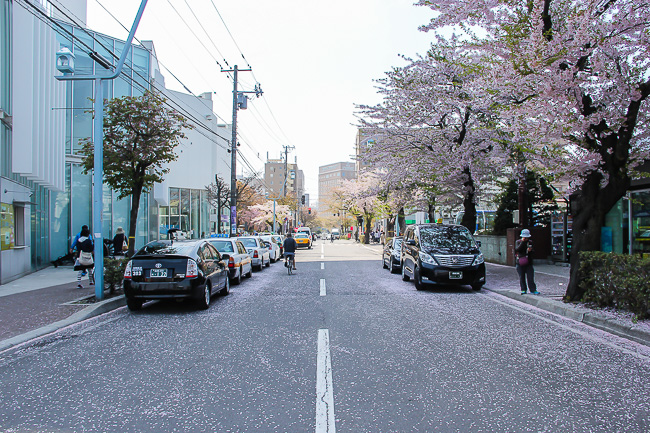
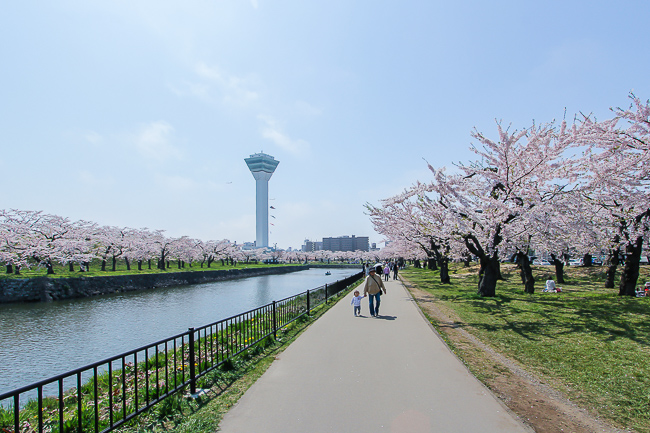
| previous post |
| next post |
|
List of Posts:
2015/04/30 - Sapporo Report 2015/04/29 - Hakodate Report 2015/04/23 - Kakunodate Report 2015/04/22 - Hirosaki Report 2015/04/21 - Kitakami Report 2015/04/16 - Sendai Report 2015/04/16 - Fujigoko Report 2015/04/15 - Kyoto Report 2015/04/14 - Yoshino Report 2015/04/13 - Takizakura Report 2015/04/10 - Himeji Report 2015/04/10 - Takada Report 2015/04/09 - Tokyo Report 2015/04/09 - Kyoto Report 2015/04/08 - Fukushima Report 2015/04/08 - Matsumoto Report 2015/04/07 - Yoshino Report 2015/04/06 - Tokyo Report 2015/04/06 - Kyoto Report 2015/04/05 - Okayama Report 2015/04/04 - Hiroshima Report 2015/04/03 - Kyoto Report 2015/04/03 - Nagoya Report 2015/04/02 - Tokyo Report 2015/04/02 - Nara Report 2015/04/01 - Osaka Report 2015/04/01 - Kumagaya Report 2015/03/31 - Kyoto Report 2015/03/30 - Tokyo Report 2015/03/27 - Fukuoka Report 2015/03/26 - Kumamoto Report 2015/03/25 - Tokyo Report |
Questions? Ask in our forum.